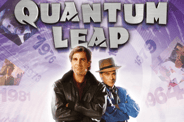 Being a big sports fan, I’m enjoying this year’s march toward college football’s inaugural playoff. Through a not entirely transparent panel-led process, the top four teams are selected to play in an elimination format to better determine college football’s national champion. The obvious mix of objective and subjective analysis has created interest, controversy, and the use of a tie-breaker of sorts called the 'eye test.' What seems to be meant by this is that—at the end of the day – an argument may hinge on what analyst thinks he or she is seeing in addition to, or in spite of, the agreed to metrics and other, more defined criteria. In other words, the person is 'right' because they said so. This converts—probably subverts—the 'Eye Test' to the 'I Test' because the basis of separation and reward is not something all can see and agree on, it’s what you or I may see singularly. We’re fond of saying about sports that “it’s just a game,” but we know full well that this 'game' is a multi-billion dollar business.
Being a big sports fan, I’m enjoying this year’s march toward college football’s inaugural playoff. Through a not entirely transparent panel-led process, the top four teams are selected to play in an elimination format to better determine college football’s national champion. The obvious mix of objective and subjective analysis has created interest, controversy, and the use of a tie-breaker of sorts called the 'eye test.' What seems to be meant by this is that—at the end of the day – an argument may hinge on what analyst thinks he or she is seeing in addition to, or in spite of, the agreed to metrics and other, more defined criteria. In other words, the person is 'right' because they said so. This converts—probably subverts—the 'Eye Test' to the 'I Test' because the basis of separation and reward is not something all can see and agree on, it’s what you or I may see singularly. We’re fond of saying about sports that “it’s just a game,” but we know full well that this 'game' is a multi-billion dollar business.
This tangle of 'eye' versus 'I' got me to thinking about how this translates into any of our businesses, billion dollar, million dollar, or thousand dollar; and the impact that our 'I Test' may be having on our people, and our clients, and subsequently on the level of success we can achieve. Too often, when evaluating talent and performance, we give into the halo or horns effect—believing that someone we like or like something about can do nothing wrong or someone who rubs us the wrong way can’t do anything right or well. David Simon—the creator of incredible television like HBO’s The Wire brilliantly observes that no bad guy is all bad and no good guy is all good. If that’s true in fiction, we should acknowledge it’s very likely truer in real life. Intellectually, we know this is true; emotionally—admit it, we prefer to preserve ample gray areas to help us avoid having the facts get in the way of a good story. The problem is—among other things—that when we allow for too much gray, it’s awfully hard to share with people what 'good' looks like and even harder to motivate and engage them if we’re not seeing as having a fair and consistent criteria for determining appropriate rewards and recognition. This hurts our ability to build, grow, and sustain successful organizations…and it’s exhausting.
So, how do we neutralize the 'I Test' and emphasize the creation and leverage of the brilliantly colored vision Cameron Herold champions as the beacon of organizational success in Double Double? Here are some primary tools and guidelines—not surprising but too seldom developed and adhered to:
• Create, Publish, and Actively Share and Apply Your Vision and Values I’ve lost count of the number of times really smart business people have insisted to me that their people get it, know it, live it when it comes to what they’re about. If it’s not written down, spoken often, and applied through everything from games to performance management systems, it’s only what you get, know, and live…everybody's version is a little to somewhat different.
• Select and Develop to Your Values Many of us have gotten beyond the belief that if we can just find people with the right technical skills, the rest will take care of itself. There is greater appreciation for the fact that how people do their jobs based on a lifetime of learning and habit typically makes or breaks one’s ability to succeed with your company. Yet, we still fail to actively and consistently select our teams based on these factor—values, competencies, performance skills, success behaviors…whatever we label them. Employing tailored assessment instruments and applying their data to the interview process that is scripted to dig into specific examples of how people have done their work is essential and accessible…so stop stalling and make yourself as accountable to these criteria as you want your people to be.
• Recognize, Reward, and Reinforce When you invest in your success through the clarity of vision and values in what ultimately is a huge time-saver and growth enhancer, take the fullest advantage of this by letting the stories of your successes fuel the next wave of achievement and contribution by individuals, teams, and the organization overall. Highlight how the vision was pursued by people living the values…and, as much as possible, let the people living the values and being impacted by them speak on your behalf. Actions speak louder than words, but the stories about them ensure that all of us are able to see and learn from those actions and the results they create.
Here’s the really cool part, by working to institutionalize the characteristics we value and believe lead to the results we intend, we actually enable an 'I Test' that we all can agree on because each of us is able to look for, identify, and articulate what good looks like, what success looks like, and talk about it with a common vocabulary. Now, that’s a test any of us can ace.
Jeff Lesher, Principal at entreQuest, blends his deep knowledge of organization design, human capital, and leadership with a pragmatic approach drawn from his own business experience and eQ's philosophy to help eQ's clients focus on their core purpose and move people effectively to action.







